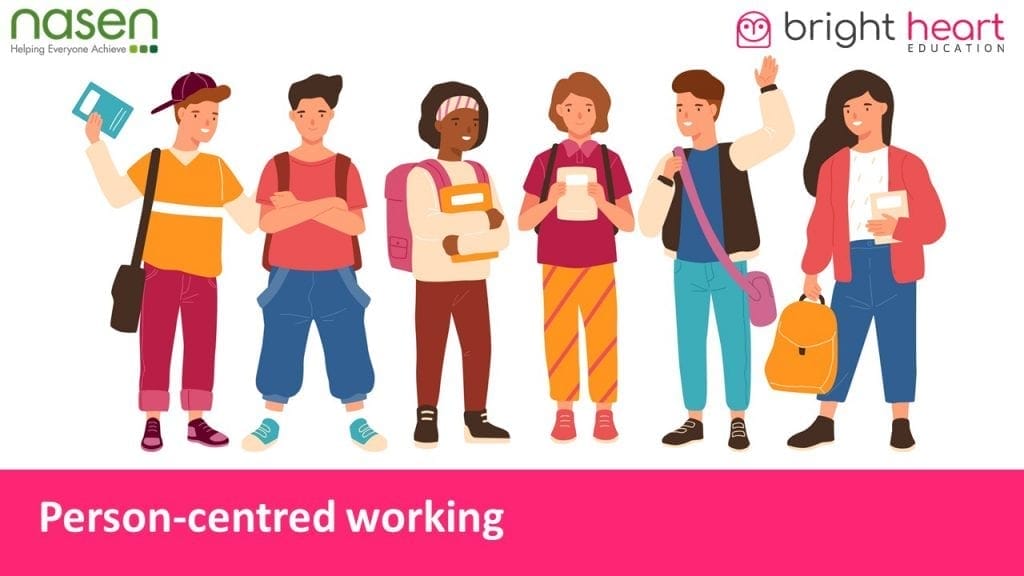Autism is a spectrum condition. Here we look at some considerations when working with these students.

Bright Heart
Being aware of certain traits of students with ASC is helpful for tutoring. Here we provide some general tutoring tips.
Working with students with autism
Autism is a spectrum condition, meaning that no two students are the same. However, there are some general tips for parents and tutors to be aware of when working with students with autism.
5 tips for working with students on the autism spectrum
1. Establish a routine and communicate any changes in advance
Ensuring that a child with autism is well prepared is important for parents and tutors. This includes explaining what to expect in a first tutoring session and what to do if an unexpected change occurs. For example, having insight into how the lesson will be structured so your child / student is fully informed is key. Meeting their tutor before formal lessons begin, through a no pressure trial / getting to know you session is very beneficial. Being prepared and knowing whom to expect can be calming for a student with autism. This is also a great way for the tutor to meet their student and get a sense of requirements and needs.
Planning and sticking to a routine is important and can be the difference between a successful or chaotic experience. If you are going to introduce a test or a new way of working, always mention this in advance. Any changes to tutoring schedules should also be communicated in good time.

2. Communicate using clear and simple language
Students with autism spectrum condition (ASC) find different aspects of communication and language more challenging. Avoid using sarcasm and idioms as they may take you literally and misunderstand your meaning. Some students will be unable to listen to people speaking for lengthy periods. They will require visuals and gestures to support their understanding or appropriate pauses to allow for processing time. If you have a student that requires visuals, they will need them for all aspects of written and spoken language i.e. their timetable, labels on folders, instructions and lists.
Use your student or child’s name before you address them so they understand you are speaking to them. Do not assume a student has understood you. Ensure you ‘check in’ with that student periodically. Use phrases that require them to repeat back what they have to do or answer direct questions about the topic to check if they have understood it. Be sure to moderate the directness of questions so that they are not always setup with a binary outcome e.g. correct or incorrect. For some students, experiencing failure can evoke intensely negative emotions.
If the student is sensitive to eye contact, start this off gently and do not insist this is reciprocated. Once familiarity increases then look to increase eye contact. Eye contact can be particularly challenging for some students on the spectrum, so a lack of this contact should not be taken personally. However, one-to-one tuition sessions can be hugely advantageous to increasing this aspect of communication.
Puzzles, word searches and ticking off items from their to-do list can be incredibly encouraging, relaxing and soothing for the child.
Even small differences can be detrimental to their learning; so maintain a sense of calm, explore repetitive teachings and begin with engaging communication. You’ll typically find this approach more constructive for the student.
3. Avoid over-stimulation
Students with ASC can become over-stimulated by things that have little impact on students without ASC. This can become overwhelming and means they are unable to learn at the times you want them to. Flexibility from parents and tutors can be invaluable.
Giving the child time means they are not sensing any chaotic rushing. Think carefully about the environment you will be tutoring the child in and where the student will sit. Over stimulation can come from bright lights, traffic noise, a loud ticking clock, a dog barking, a chair made of a particular material or someone’s perfume or aftershave.
If your student can communicate effectively, ask them if where they are sitting works for them. If they are unable to tell you, speak to their parents for insight.
4. Be patient and understanding with social skills and behaviour
Some students with ASC may appear to engage in low-level disruptive behaviour. A student may be humming, tapping, rocking or flapping. This behaviour is called stimming and helps to reduce anxiety. It may be that a student engages in this behaviour in order to help them concentrate. A student may appear abrupt, to lack tact or seem rude when speaking. This is often unintentional and reflects a student’s inability to recognise ‘social norms’ when having a conversation or passing comment. Giving very clear and literal instructions and tasks to do when working together will make it easier.
Some parent intervention may be required; tutors are familiar with this and it can be beneficial for both parties.
5. Follow a person-centered approach
Every student with ASC is different and will face different challenges just like students without ASC. Try not to make assumptions about your students. Observe your student for signs of anxiety and support them in reducing that. Ask the student what works for them. Speak to their parents for insight into what will help them to learn.
Always remain calm and remember your student may not intentionally be being rude so do not take such behaviour personally. Use these opportunities to teach and reiterate conversation skills. No student can learn whilst their anxiety levels are high. Reduce anxiety before attempting to teach.
Receiving one-to-one tuition can be incredibly beneficial for children with autism. Learning solely at school can be tricky with so many children in a class demanding the teacher’s attention, so having this focused time can really help these students with their studies as well as social and emotional skills. For parents peace of mind, think carefully about who you are choosing as your child’s tutor. It is important that both your child and the tutor are able to engage and work together in each session. This is rewarding for both and can make the student (and tutor) feel at ease in subsequent sessions.
It is through parents and tutors working together that the child will get the stability and secure environment to be taught effectively.
Did you find this helpful? Please share your thoughts on our Facebook post or get in touch if you prefer!
Share this article
































